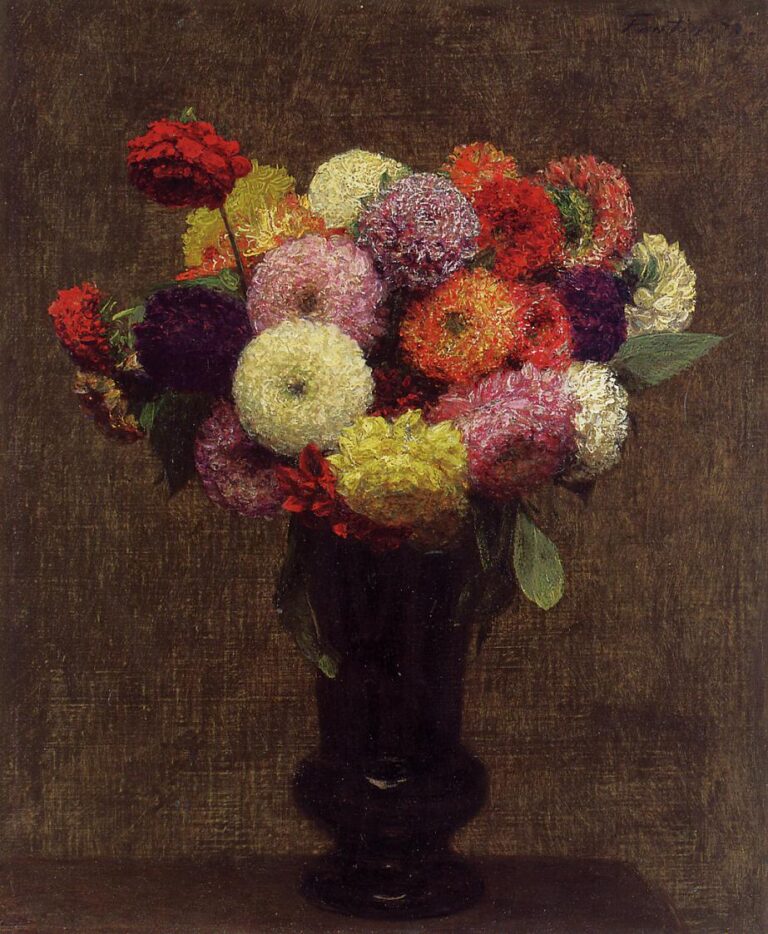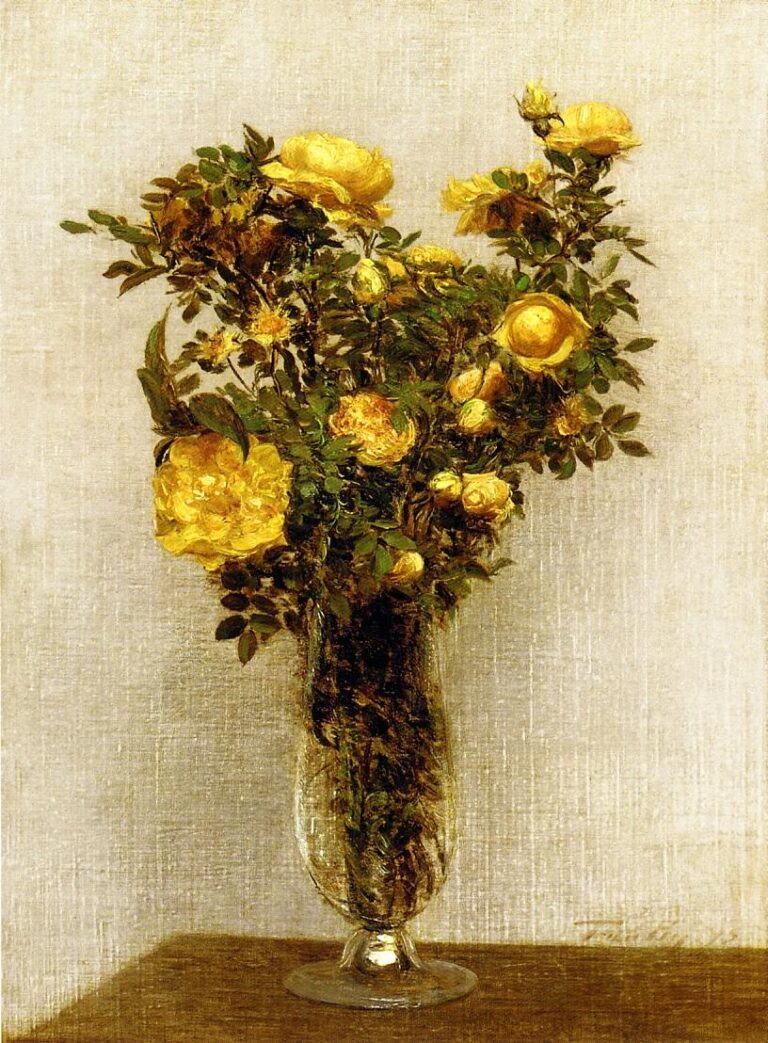Henri Fantin-Latour

Henri Fantin-Latour (1836–1904) was a celebrated French painter and lithographer best known for his still life paintings, group portraits, and imaginative lithographs. Born in Grenoble, France, his early exposure to art came from his father, who was an artist himself. This encouraged him to study at the École des Beaux-Arts in Paris where he drew inspiration from fellow artists who would later become leading figures of the Impressionist movement.
However, Fantin-Latour’s style was unique and didn’t fully align with the loose brushwork and light-infused scenes of the Impressionists. Instead, his works were characterized by their realism, detail, and a restrained color palette, with influences from the Old Masters and Romantic painters.
Fantin-Latour gained recognition for his still life compositions, particularly his depictions of flowers, which earned him a steady income. These paintings are renowned for their delicate and detailed rendering, capturing the subtle textures and colors of the flowers. Critics often praise them for their serene beauty, luminescent quality, and tactile precision.
In addition to still life, Fantin-Latour is famous for his group portraits, most notably “A Studio in the Batignolles” (1870), which features prominent artists such as Édouard Manet and Frédéric Bazille. These paintings offer a unique historical insight into the Parisian art world of the time, capturing the essence of these artists within their creative environment.
Later in his career, Fantin-Latour embarked on a series of imaginative lithographs inspired by the music of composers like Richard Wagner, which illustrated his deep passion for music and its transformative power. These works, often mythological in theme, further diversified his artistic output and reputation.
Fantin-Latour’s works are housed in prestigious institutions around the world, including the Musée d’Orsay in Paris, the Metropolitan Museum of Art in New York, and the National Gallery in London. Although he stood somewhat apart from the major movements of his time, Fantin-Latour’s extraordinary skill and diverse range of subjects continue to captivate audiences today, affirming his place in the canon of Western art.












